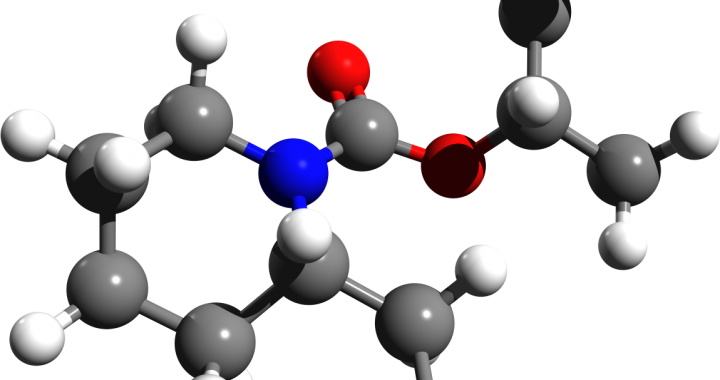
SRAMSANA
The pharmacological action that has the capacity to expel the MALA (bye product of metabolism) and the Dosha that have been present or got collected in the body through the natural orifices present downwards (anus and urethra) in which ever condition that they are present is known as SRAMSANA. The activity denotes that it is a forceful expulsion of the contents. So this action is mainly compared to the category of laxatives. Due to its method of activity, this is also being enumerated as a variety of the action VIRECHANA too.
DETAILS OF THE ACTION
ACTION NAME
स्रंसन
MODERN EQUIVALENTS
LAXATIVES
DEFINITION
DEFINITION
EXPLANATION/MEANING
REFERENCE
The reference is from Sharangadhara Samhita (शा. स.)
SYNONYMS (IF PRESENT)
SYNONYMS
EXPLANATION/MEANING
REFERENCE
NONE
NONE
NONE
MODE OF ACTION / PHARMACODYNAMICS
AYURVEDA EXPLANATION
MODERN EXPLANATION
The action SRAMSANA is explained to be the forceful evacuation of the contents present in the body along with the embedded Dosha. As it is considered to be a type of VIRECHANA, the properties of the substance should be undoubtedly having those similar to Virechana. But the action is slightly more than ANULOMANA but not so strong enough like that of a regular VIRECHANA substance. As this is having a very mild purgative action, this is also considered as SUKHAVIRECHANA. Here irrespective of the condition that the ingested substance is (that is either completely digested or undigested) the process of evacuation results. This means that unlike ANULOMANA, this doesn’t facilitate digestion and then evacuation but straight away evacuates it.
From the definition and description it can be inferred that the Dosha that is primarily involved in achieving this activity is VATA as there is more emphasis on the movement of the contents. Thus the substances which produce this action should be predominant with लघुगुण (Laghu), तीक्ष्णगुण (Teekshna), सूक्ष्मगुण (Sukshma) and the more important सरगुण (Sara). so that it can penetrate and evacuate the contents easily. The presence of a favourable Rasa will be an additional property to facilitate the action while the Vipaka doesn’t make much difference. This is because the substance that acts will be exhibiting its effect during the पच्छमानावस्थ (During digestion) process itself as mentioned in any विरेचन (Virechana) substances. Among the normal Doshas that are more employed it is the वातदोष (Vata Dosha) especially अपान वायु (Apana Vayu) that is more stimulated in this regard.
The most common correlation given to the Action is Laxatives. The main purpose of these class of drugs is to relieve constipation and is commonly employed to address the condition. But these group of drugs are classified into various types namely Bulk promoting laxatives, Osmotic laxatives, Prokinetic agents, Lubricating agents, Stimulant laxatives, Surface active agents, etc (REF: Bashir A, Shadrav A, Sizar O. Laxatives. [Updated 2020 Apr 23]. In: StatPearls [Internet]. Treasure Island (FL): StatPearls Publishing; 2020 Jan-. Available from: https://www.ncbi.nlm.nih.gov/books/NBK537246/)
Laxatives are defined as that class of substances that loosen stools and increase bowel movements.
The Bulk laxatives are those which have fibers or hydrophilic contents that absorb water and increase their bulk and inturn increase the bulk of stools. They also help in retaining the water content of the stools making it more easier for evacuation.
The Osmotic laxatives on the other hand are those which draw water into the stools by altering the osmotic pressures and lowering the intestinal pH. Even it can stimulate peristaltic movements too. This is described in the context of ANULOMANA.
The prokinetic agents work on intrinsic neurons releasing acetylcholine and inducing mucosal secretion (Bashir A, Shadrav A, Sizar O. Laxatives. [Updated 2020 Apr 23]. In: StatPearls [Internet]. Treasure Island (FL): StatPearls Publishing; 2020 Jan-. Available from: https://www.ncbi.nlm.nih.gov/books/NBK537246/)
The lubricating agents are those which lubricate the lumen of the intestine facilitating the easy evacuation of stools.
The Stimulant laxatives works by stimulating the colon mucosa such that the water and electrolytes are secreted from the mucosal wall into the stools resulting in the increase of bulk along with contributing to perstalistic movements.
The Surface active agents lower the surface tension of the stools leading to absorption of water and fat into them leading to softening and increase in bulk of the stool.
Other than these there are medicines which act in different mechanism but ultimately result in the increase of water in the stools or other ways for easy evacuation of the stools relieving constipation.
INVESTIGATIVE PARAMETERS TO ASSESS
Sl. No.
CATEGORY OF PARAMETER
INVESTIGATION NAME
TYPE OF INVESTIGATION
1.
NOT YET COMPILED
NOT YET COMPILED
NOT YET COMPILED
LIST OF PLANTS THAT EXHIBIT THE ACTION
दीपनीय गण/DEEPANEEYA GROUP OF CHARAKA
The action SRAMSANA is a term that is found in the Sharangadhara Samhita and is considered to be a type of Virechana. It is opined that the same is similar to the description of Sukha Virechana which is mentioned in the major classical texts like Charaka Samhita and Sushruta Samhita. Charaka has used this term as a synonym to Virechana. Below are some of the examples
Sl. No.
SANSKRIT NAME
BOTANICAL NAME
PART USED
1.
आरग्वध
Cassia fistula Linn
Root
1.
त्रिवृत
Operculina turpethum (Linn) Silva Manso
Root
2.
सोनामुखी
Cassia angustifolia M Vahl
Stamens
3.
अम्लवेतस
Rheum emodi Wall ex Messin
Alkalie extract
4.
कुमारी
Aloe vera Miller
Root
RESEARCH PAPERS ON THE PHARMACOLOGICAL ACTION
Sl. No.
TITLE OF THE PAPER
PUBLISHING JOURNAL
CITATION
1.
LAXATIVES
Stat Pearls
2.
A CONCEPTUAL APPRAISAL OF VIRECHANA KARMA
AYUSHDHARA – An International Journal of Research in AYUSH and Allied Systems
Nimmy V S, Praveen Kumar K S. A Conceptual Appraisal of Virechana Karma. AYUSHDHARA, 2018;5(2):1664-1668.
2.
FOUR TYPES OF VIRECHANA (PURGATIVE THERAPY) BY SHARANGDHARA: A CRITICAL REVIEW
International Journal of Applied Ayurved Research
Katole Harshaprabha et.al.: www.ijaar.in : Four Types of Virechana (Purgative Therapy) by Sharangadhara: A critical Review; IJAAR VOLUME IV ISSUE VII MARCH – APRIL 2020 Page No: 747-757


